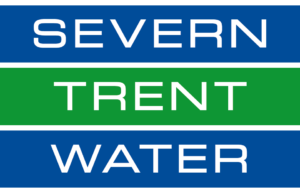Ensuring the accuracy and completeness of asset data
Severn Trent Water is systematically improving the quality of its asset data using a mobile GIS solution from Esri UK. With more complete and accurate records, it can deliver better customer services, optimise its business performance and operate more efficiently.
Updates made in the field by mobile engineers are immediately visible to all the company’s 4,500 employees
Less duplication of tasks and more consistent, reliable data improves internal efficiency
Improved data leads to better decision making, faster resolution of service issues and less disruption for the public
The Challenge
In the water industry, effective asset management is a critical business priority. The industry regulator Ofwat monitors service performance very closely, and there is a direct correlation between asset failures and service failures which, inevitably, lead to poor customer satisfaction. It is therefore absolutely imperative for water utilities to have accurate, complete asset data, so that they can repair asset defects quickly, as well as invest wisely in asset replacement programmes to reduce the risk and frequency of service issues.
Severn Trent Water was determined to enhance the quality of its asset data and took the decision to completely transform its approach to data collection and verification. The company had previously digitised its records of underground water mains and sewers, back in 2000. However, for decades beforehand, it had relied on paper-based asset maps updated by hand. “As our original paper-based records weren’t that precise, many of our digital records didn’t have the accuracy and completeness that we needed” explains Steve Allen, GIS manager at Severn Trent Water.
In 2011, following the introduction of the Private Drains and Sewers Act, Severn Trent Water took on responsibility for an additional 37,000 km of underground pipes, giving it a water mains and sewerage network long enough to stretch around the globe three times. Most of these ‘transferred assets’ were either poorly recorded or not mapped at all, so it became even more imperative for the company to implement an effective approach to improving the quality of its asset data.
Our new GISSTmobile app now makes it really simple for our mobile engineers to confirm records when they are right, correct records if they are wrong and collect records if they are missing
Steve Allen – GIS Manager, Severn Trent Water
The Solution
For many years, Severn Trent Water has used geographic information system (GIS) technology from Esri UK as the basis of its corporate GIS platform, known internally as GISST (GIS in Severn Trent). The company decided to use Esri’s ArcGIS Mobile technology to give its 1,000 mobile engineers the ability to confirm, correct and collect asset data in the field for the first time.
The new solution, GISSTmobile, was introduced as part of a ‘Stop the Rot’ campaign that explained the vital importance of data accuracy to employees. “Our new GISSTmobile app now makes it really simple for our mobile engineers to confirm records when they are right, correct records if they are wrong and collect records if they are missing,” explains Allen. “In the past, even if our mobile engineers knew that our central asset records were wrong it wasn’t easy for them to make corrections in the field.”
When engineers use GISSTmobile to verify existing records or make small asset amendments, these ‘black-line’ changes are directly transferred into the company’s central asset register without any manual intervention if they pass some pre-determined quality rules. In other cases, such as when new assets are listed, ‘red-line’ changes are marked in the field and then checked by a centralised team. All updates made by mobile engineers – both proposed and accepted – are immediately visible to all the company’s 4,500 employees.
Having better data is contributing to Severn Trent Water’s household customers continuing to receive the lowest average combined water and sewerage bills in England and Wales
Steve Allen – GIS Manager, Severn Trent Water
The Benefits
Severn Trent Water is being rewarded for its commitment to data quality with a number of different business benefits including:
Strong business performance
With improved information about the locations and condition of its assets, Severn Trent Water can make better decisions about where and when to invest in upgrades, to balance customer expectations, regulatory requirements, CAPEX and OPEX. “Having better data is contributing to Severn Trent Water’s household customers continuing to receive the lowest average combined water and sewerage bills in England and Wales,” says Allen. “In 2017, companies will be able to compete to supply water services to non-household customers for the first time, and our improved asset data puts us in a strong position to capitalise on this opportunity.”
Better customer service
Having more complete and trustworthy asset data enables Severn Trent Water to respond more quickly to unexpected issues, such as burst pipes and sewer blockages, and provide a high standard of service for its customer base of 7.7 million people. The organisation is better able to deliver quality drinking water, prevent sewer floods and achieve the Outcome Delivery Incentives (ODIs) set by OFWAT to deliver on customer expectations.
Avoidance of unnecessary costs
Severn Trent Water can now rely on its asset data to help avoid the costs associated with unnecessary excavations, by digging holes in the correct location, the first time.. By using its data to make more informed strategic decisions about asset replacements, the company can also prevent potential asset failures from occurring and avoid the added cost and inconvenience of emergency repairs.
Improved internal efficiency
Finally, Severn Trent Water has improved its operational efficiency, as asset updates are no longer ‘double-handled’. 12,000 updates a month are made directly into the database with no intervention. Allen adds, “Employees right across the business can work more productively, as they are all looking at the same ‘Common Operational Picture’ and can have complete confidence in the accuracy of this data.”



